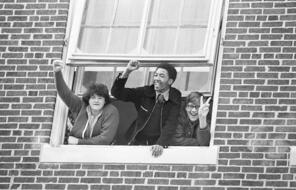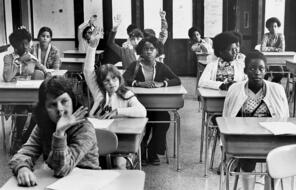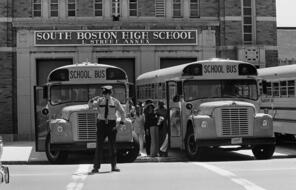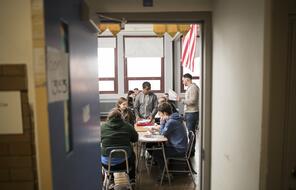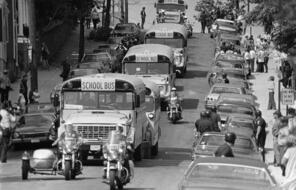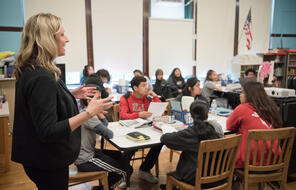Hispanic Parents Advocate for Bilingual Education for their Children
At a Glance
Subject
- Civics & Citizenship
- Social Studies
- Democracy & Civic Engagement
- Human & Civil Rights
- Racism
The following article appeared in the January 1975 edition of El Mundo, a Boston-area Spanish-language newspaper. It has been translated.
Despite the bitter cold on Friday, January 17, hundreds of people gathered in front of the School Committee building on Beacon Street at 10:00 a.m. for a demonstration organized by the Bilingual Education Advocacy Committee. Hispanic parents and their children, bilingual teachers and others expressed their strong desire to see the bilingual program in Boston continue, which was to suffer a major reduction in bilingual classrooms under Phase II of the Boston school integration plan. The protesters reiterated these wishes, expressing their unity, and chanted slogans that showed the diversity of their Hispanic nationalities. They carried signs expressing their concerns, such as: “Don’t take our identities away” and “We want bilingual education.”
The Bilingual Education Advocacy Committee had recently organized to challenge the provisions of Phase II, the plan presented to Judge Garrity by the School Committee on January 8, which affected the education of Hispanic students.
Under this plan, there would be bilingual classrooms to accommodate approximately 1,600 children in elementary school, but about 3,000 children would be left without the benefits of bilingual education, according to the advocacy group.
A committee representative, Daisy Diaz, explained that the demonstration was intended to show Judge Garrity and the entire community their dissatisfaction with any plan that did not take into account the Hispanic community’s needs. The committee believed the supporters of the integration plans did not seek the Hispanic community’s active participation, and had thereby ignored this community’s progress under the bilingual education system. The readjustment to the number of bilingual classrooms did not contribute to improving the educational level of Hispanic children while their needs continued increasing. The group insisted that a plan to integrate schools must provide for continuing bilingual education if it were to properly respect the culture and racial diversity within the Hispanic community. Developing such a plan had to include the direct and active participation of Hispanic parents to reflect their interests.
The school board’s plan divided children by race in an attempt to integrate school populations, but it posed challenges due to the significant racial diversity within the Hispanic community. Nati Pagan, another committee member, expressed the situation as follows: “We have already been integrated.” The group explained that there is a system that divides communities, and sometimes siblings in a single family, into black and white categories. The division spread Hispanic children among the various schools, reducing the proportion of children who needed bilingual education in each school. Under the Transitional Bilingual Education Act, bilingual education need not be provided if there are fewer than a certain number of children of a certain age who cannot function in regular classes.
The committee was dedicated to preserving the bilingual program’s objectives, which ensured respect for the children’s cultural identity by teaching the traditions, values and language of various Hispanic cultures. On January 23, the Bilingual Education Advocacy Committee would ask Judge Garrity to intervene in the case, and was currently writing its own recommendations to continue the bilingual program.
On January 27, they would present the plan to Judge Garrity, along with the other groups that made recommendations for the integration plan.
The people, even after protesting for an hour in the cold, they didn’t lose their spirit. They sang in demonstration of their hope: “If we unite now, this will get better.”




